Discarded history
How the discovery and study of ancient deeds, fables, letters, magical amulets, contracts and lists in a sacred storeroom created unparalleled engagement with a forgotten chapter of Jewish history.

Impact at a glance:
- Over 200,000 manuscript fragments make up the Cairo Genizah Collection at Cambridge University Library and are regarded as a unique treasure within the Jewish community.
- The collection is used for public education worldwide, reaching schoolchildren, rabbis, scholars and the general public through school visits, television documentaries, web and social media engagement, exhibitions and meetings with religious groups.
- Painstaking conservation and analysis of the collection is revealing an unknown history of medieval Jewish communities.
“Without the assistance of Ben Outhwaite and the researchers, scholars, and staff of the Genizah Research Unit, ‘From Cairo to the Cloud - The World of the Cairo Geniza’, a feature-length documentary film, could not have been completed.”
Michelle Paymar, Canada-based film-maker and Director
At the end of the 19th century, a quite remarkable discovery was made in a storeroom of the Ben Ezra Synagogue in Fustat or Old Cairo, Egypt: hundreds of thousands of discarded books and other writings which had been stored by Jewish communities for over a thousand years.
In 1897, Cambridge scholar Dr Solomon Schechter travelled to Cairo to study the collection and, upon receiving permission from the Jewish community in Egypt, brought 193,000 manuscripts back to Cambridge.
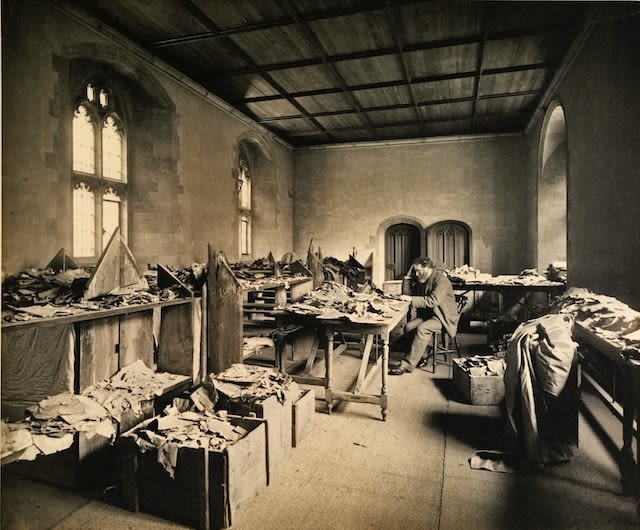
Dr Solomon Schechter with the collection in the old University Library at the Old Schools.
Dr Solomon Schechter with the collection in the old University Library at the Old Schools.
And so began a mammoth task to conserve, catalogue and analyse the documents that continues today by a team of experts at the Genizah Research Unit (GRU) in Cambridge University Library (CUL).
It has revolutionised understanding of the Jewish communities of the medieval Islamic world and enriched audiences worldwide through its outreach programme.
What is a genizah?
Quite simply, a genizah is a sacred storeroom. According to rabbinic law, once a holy book can no longer be used (because it is too old, or because its text is no longer relevant) it cannot be destroyed or casually discarded: texts containing the divine name should be buried or, if burial is not possible, placed in a genizah.
The Cairo Genizah had never fully been emptied. When Schechter came along, he found material from a thousand years ago.
“The idea that you could look at manuscripts which had not properly been read before and make discoveries that people hadn’t really seen before was incredibly exciting,” says Dr Ben Outhwaite, Head of the GRU.
“The vast majority of material stayed in that cupboard from the moment it was put in it until Solomon Schechter, the Cambridge scholar, arrived.”
The manuscript in this video is incredibly fragile. Attached to the bottom of the document is a seal impression (bulla) in dried clay, from the hand of Nehemiah Gaon - head of one of the Iraqi Jewish academies (yeshivot). It’s unique, very crumbly, and never sees the light of day.
From the early 11th century, the Jews of Fustat, one of the most important and prosperous Jewish communities of the Mediterranean world, respectfully placed their old texts in their synagogue’s genizah.
But what’s particularly unusual about the Cairo Genizah is that it was not only sacred texts, such as Bibles, prayer books and writings on Jewish law that were stored.
In the Middle Ages, it was almost impossible to write anything without mentioning God, and so into the genizah went examples of practically every kind of written text produced by the Jewish communities of the Near East: shopping lists, marriage contracts, divorce deeds, pages from Arabic fables, works of Sufi and Shi’ite philosophy, medical books, magical amulets, business letters and accounts, hundreds of letters.
As a result, it presents an unparalleled insight into the medieval Jewish world.
“When the Cairo Genizah was discovered, it made us realise that people had been looking at history through a tiny, tiny little window, and suddenly we had a more complete vista.
“It is, in many ways, one of the best archives we have of the Middle Ages because it captures not just the things that people wanted to keep, but all the ephemera that under Judaism they just felt they couldn’t throw away.”
Dr Ben Outhwaite
Rewriting Jewish history
“Everything we knew about medieval Judaism and medieval Jewish lives, towards the end of the 19th century onwards, was almost entirely based on the experience of European Jews in the Middle Ages,” explains Outhwaite. “But an estimated 90% of the world’s Jewish population lived in and around the Mediterranean and in Islamic lands during this time, and yet we knew comparatively little of this aspect of Jewish heritage.”
The work of the GRU has led to a new understanding of this neglected chapter.
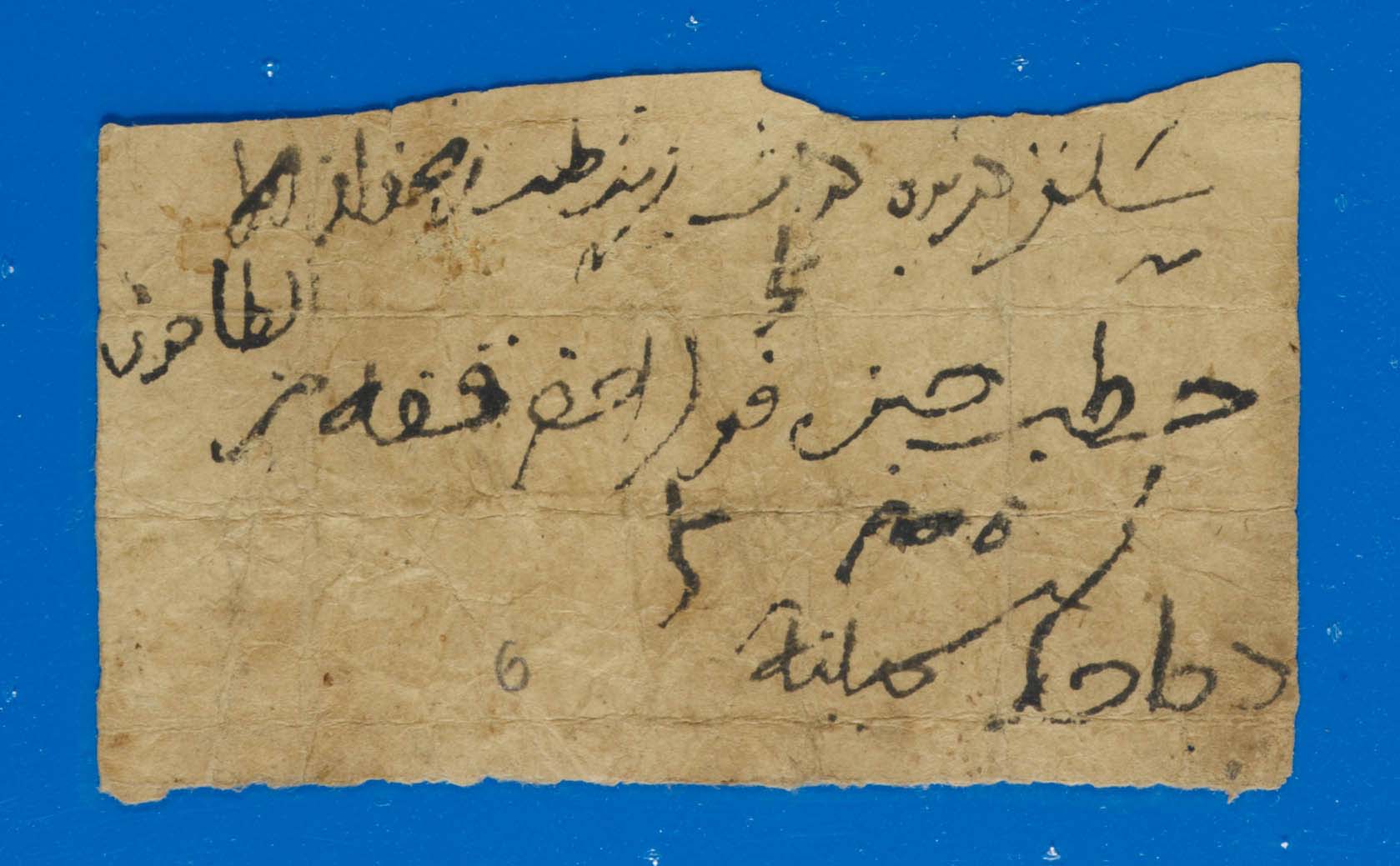
Order of payment in Arabic for a number of goods, including firewood, cheese, green beans and a fat chicken. Credit: Cambridge Digital Library
Order of payment in Arabic for a number of goods, including firewood, cheese, green beans and a fat chicken. Credit: Cambridge Digital Library
What comes across strongly in the manuscripts is just how much Jews were a part of the world they lived in rather than bystanders to it.
Before the discovery, academics relied on European texts and it was assumed that the Jewish communities living in Egypt under the rule of the Fatimids and Ayyubids were treated the same as in Europe: as second class citizens.
But the first-hand accounts the researchers discovered show that this was not the case.
Laws such as those not allowing Jews to ride horses or the requirement of yellow stars on clothing were not typically enacted against the Jews as they were in Europe. The manuscripts show that the Jewish community lived alongside Muslim and Christian communities in a more-or-less seamless fashion.
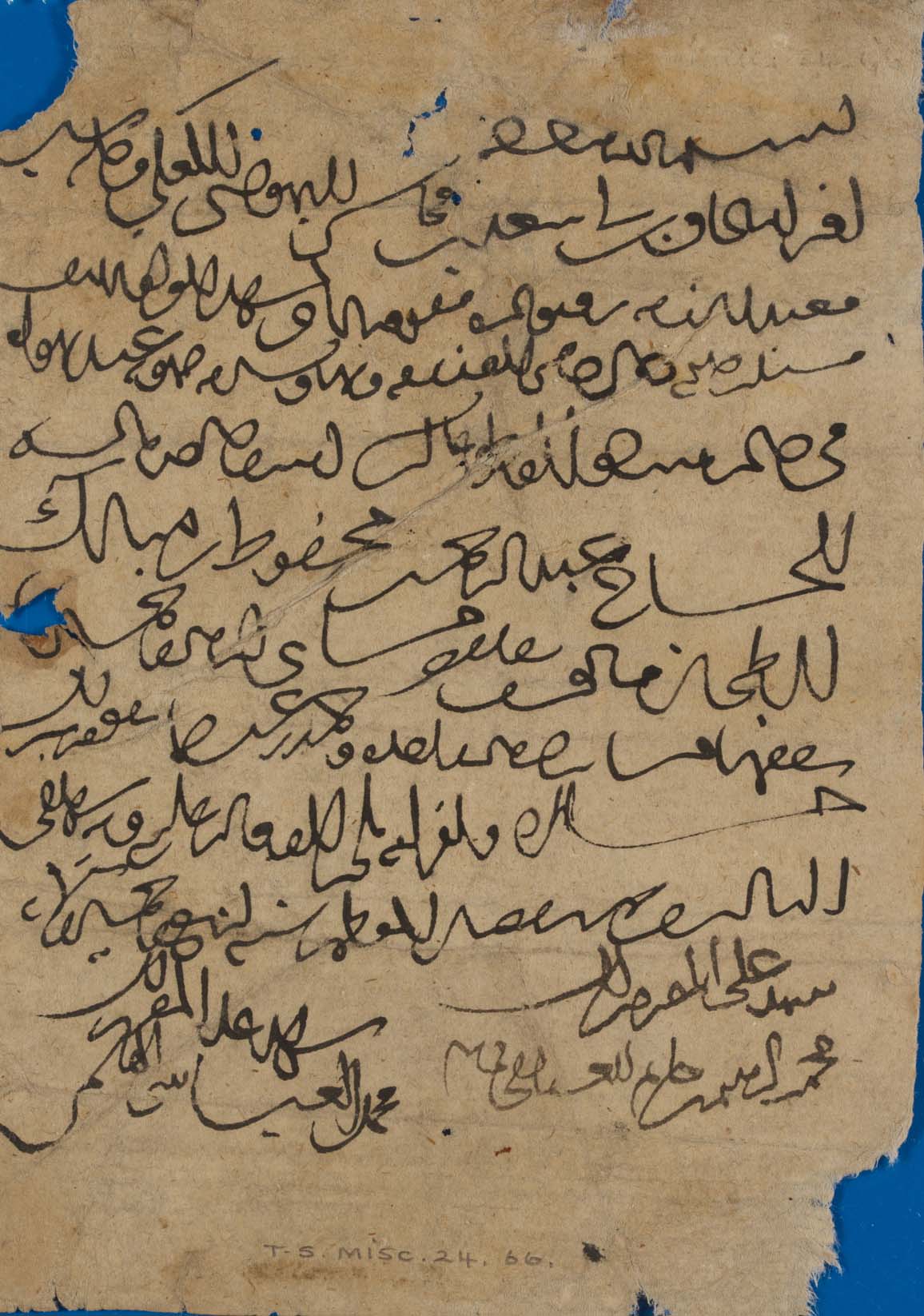
A Jewish baker (of bagels!) borrows money from a Muslim miller, in 1256 CE. Showing that Jewish and Muslim craftsmen supported each other as required. Credit: Cambridge Digital Library
A Jewish baker (of bagels!) borrows money from a Muslim miller, in 1256 CE. Showing that Jewish and Muslim craftsmen supported each other as required. Credit: Cambridge Digital Library
“Jews were much more educated than Christians, for instance, because Judaism requires that every child knows how to read the Bible, whereas in Christianity you had to hear it from a priest,” says Outhwaite.
“You find them occupying some of the highest levels of Islamic Society, which generally lifted up the Jewish community beneath them,” adds Outhwaite.
The Jewish community in Egypt was thriving and producing manuscripts that are now considered Jewish treasures such as the Leningrad Codex (in the National Library of Russia), which is the basis for the modern critical edition of the Hebrew Bible.
The calibre of the documents in the Genizah confirm that, far from being downtrodden, the Jews living in Fustat in the 11th century had thriving social and cultural lives, says Outhwaite.
Another interesting find was that while Jews and Muslims were going into business with each other and seemingly living harmoniously together, quite the opposite can be said for the relationship between Jews and Christians.
A letter from a Jewish scholar who is travelling to Alexandria asks for a letter of recommendation to present to the chief judge of the city of Alexandria ‘because you know only too well the antisemitism of the population of that city’.
The 12th century saw the Crusader invasions of the Holy Land in which many Jews had to flee for their lives. Despite this, documents found in the Genizah show that life, to certain extent, carried on as normal in Egypt. The Jewish community were still producing poetry, still writing books, and still carrying out business and trading.
Jews, like any community, had to adapt their way of life depending on circumstances.
Families would engage children to each other with a simple spoken understanding that, when they became of age, they would be married.
But this was unsuited to a world where Jewish men could travel off to Yemen or India to seek their fortunes, and be away for years at a time. On their return – if they did return at all – the might deny that any engagement had taken place or they might even have married someone else in the meantime.
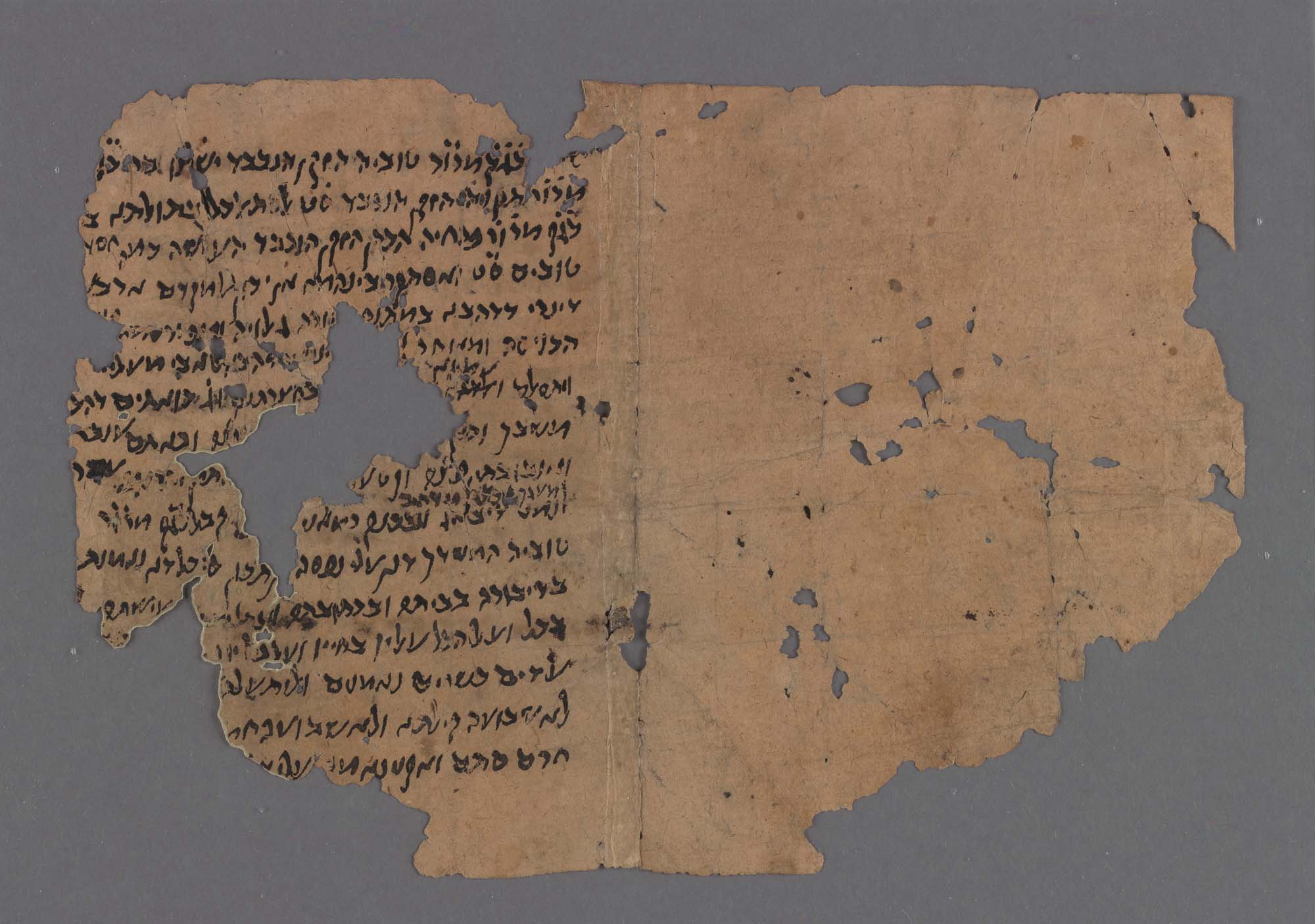
Legal document for the engagement of Ṭoviyya b. Tiqva and Sitt al-Kull bat Peraḥya, witnessed by Abraham b. Šemaʿya he-Ḥaver, Isaac b. Samuel ha-Sefardi and Ḥalfon b. Manasseh. Credit: Cambridge Digital Library
Legal document for the engagement of Ṭoviyya b. Tiqva and Sitt al-Kull bat Peraḥya, witnessed by Abraham b. Šemaʿya he-Ḥaver, Isaac b. Samuel ha-Sefardi and Ḥalfon b. Manasseh. Credit: Cambridge Digital Library
In the 12th century this all changed. Found in the Genizah were the first written engagement deeds.
“It appears that they came up with a new form of Jewish legal deed solely to protect women in circumstances like this,” explains Outhwaite. “Because these deeds are written uniquely in Judaeo-Arabic – Arabic in Hebrew characters – we believe they were invented in the medieval period in this specific place.”
Also found in the Genizah were conditional divorce deeds. Written and given to the woman, the deed states that if a man should die, or be believed to have died, on a voyage, after a certain number of years, the deed would be valid for divorce.
“This also appears solely to have been invented to deal with this problem of long distance trade that Jews engaged in during the Middle Ages,” says Outhwaite. “We don’t know of it from other places.”
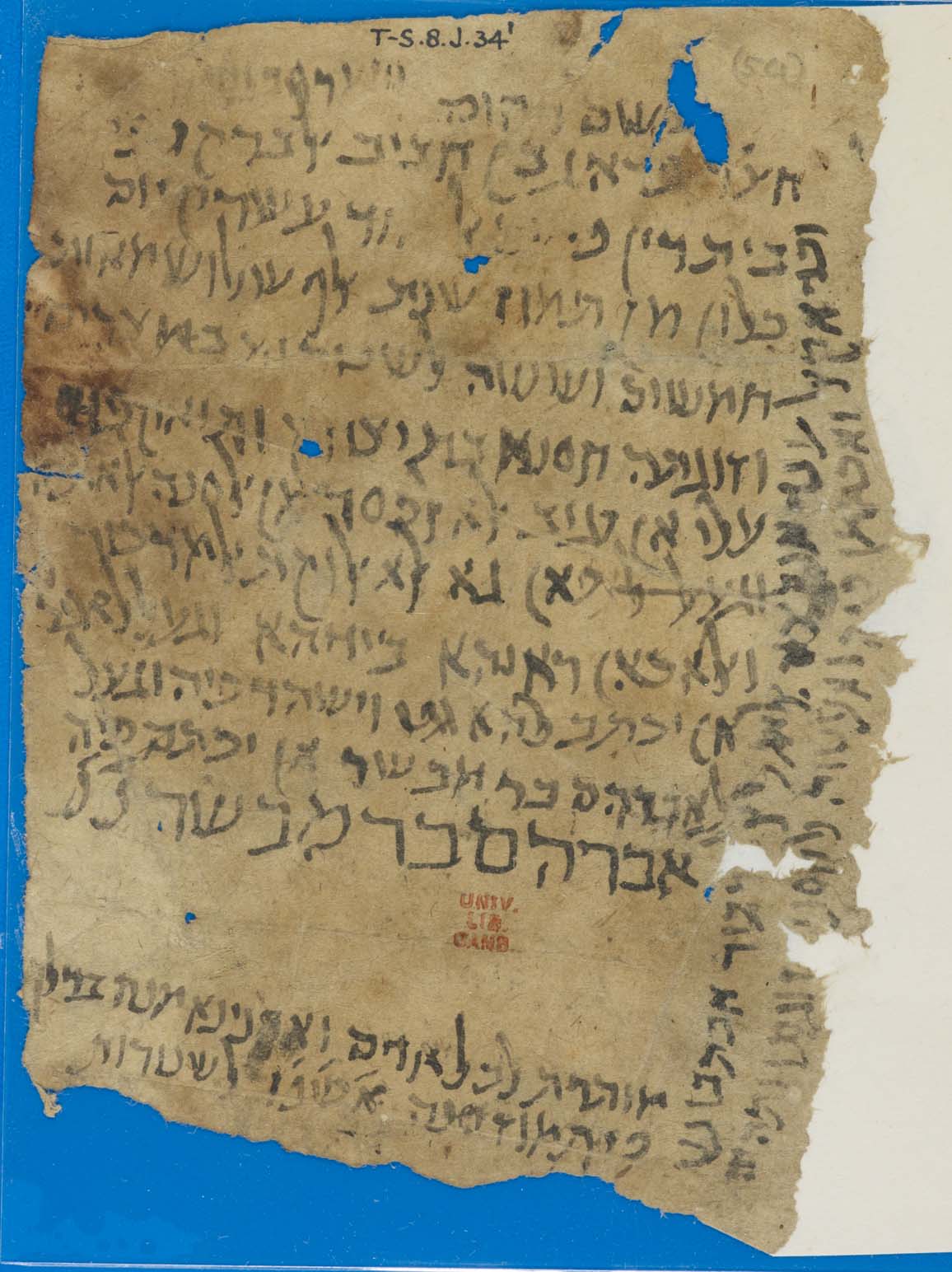
Legal document, in which Farāj b. Ḥabīb al-Barqī gives his wife Ḥusna bat Isaac a bill of divorce, which she may use if he is not back by Passover of that year. Credit: Cambridge Digital Library
Legal document, in which Farāj b. Ḥabīb al-Barqī gives his wife Ḥusna bat Isaac a bill of divorce, which she may use if he is not back by Passover of that year. Credit: Cambridge Digital Library
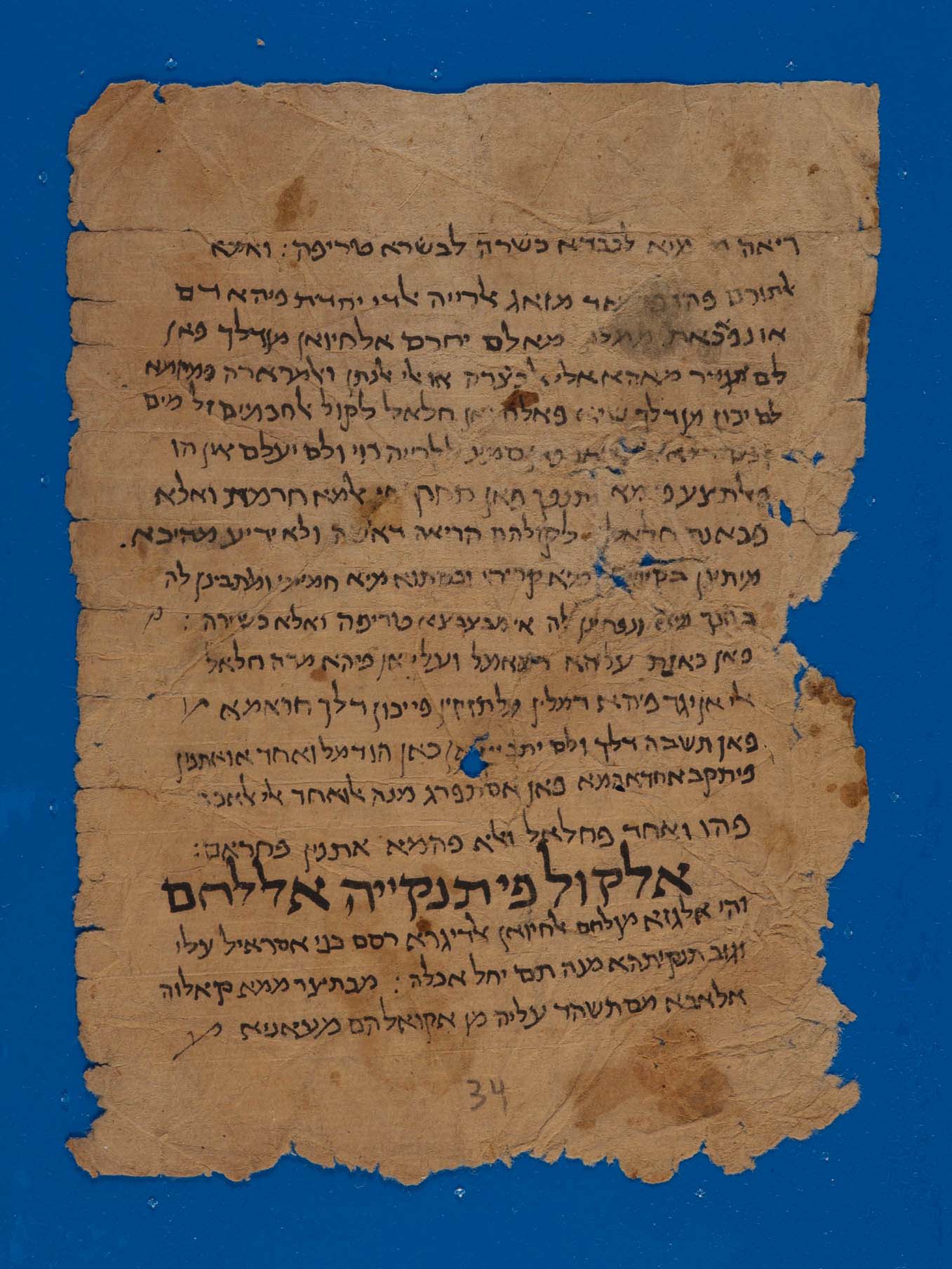
The laws of ṭerefot, dealing with meat and milk, quoting various biblical and talmudic sources. Credit: Cambridge Digital Library
The laws of ṭerefot, dealing with meat and milk, quoting various biblical and talmudic sources. Credit: Cambridge Digital Library
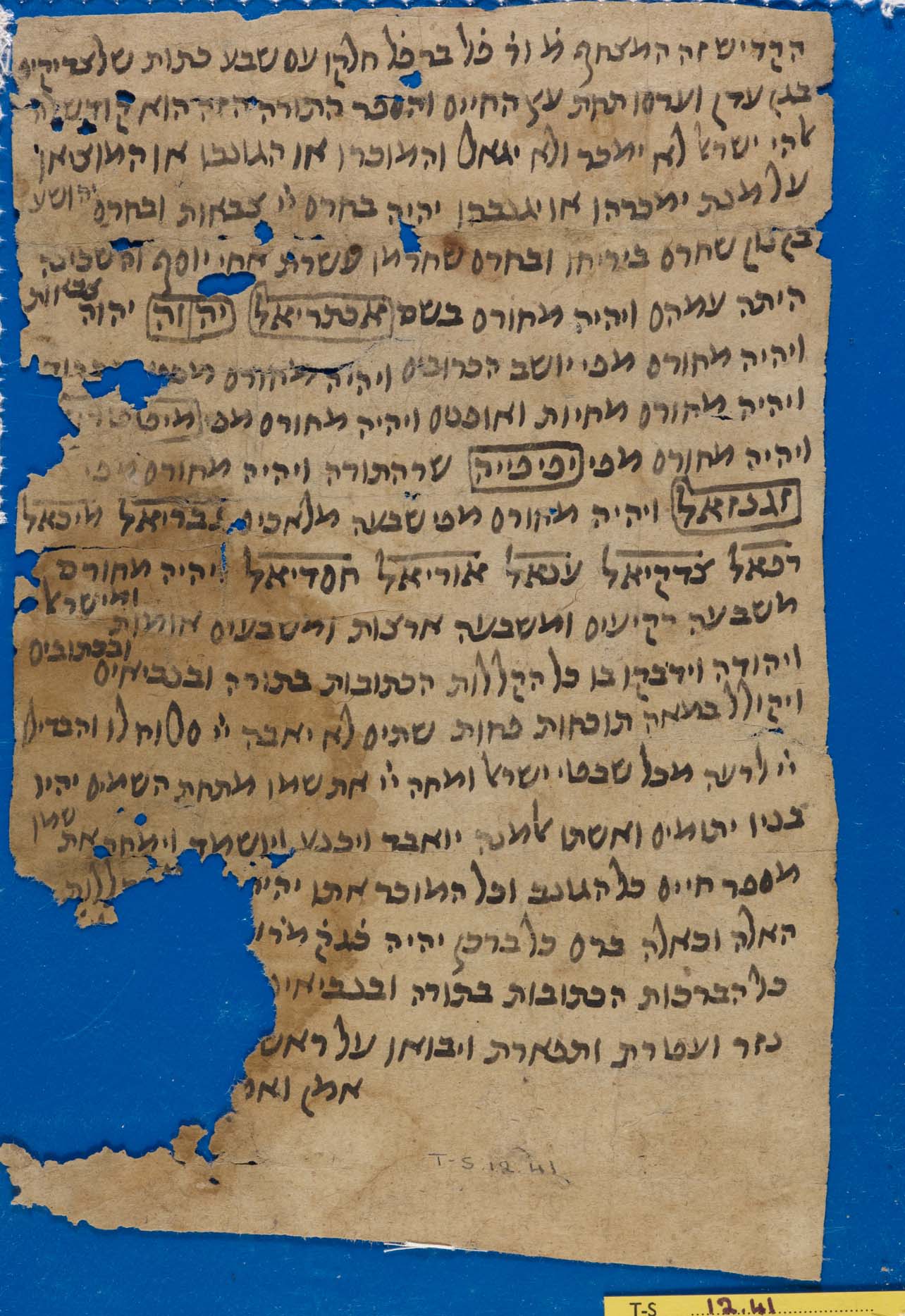
Magical formulary containing curses on anyone stealing a Torah scroll donated (to the synagogue) by a person on his death-bed. Credit: Cambridge Digital Library
Magical formulary containing curses on anyone stealing a Torah scroll donated (to the synagogue) by a person on his death-bed. Credit: Cambridge Digital Library
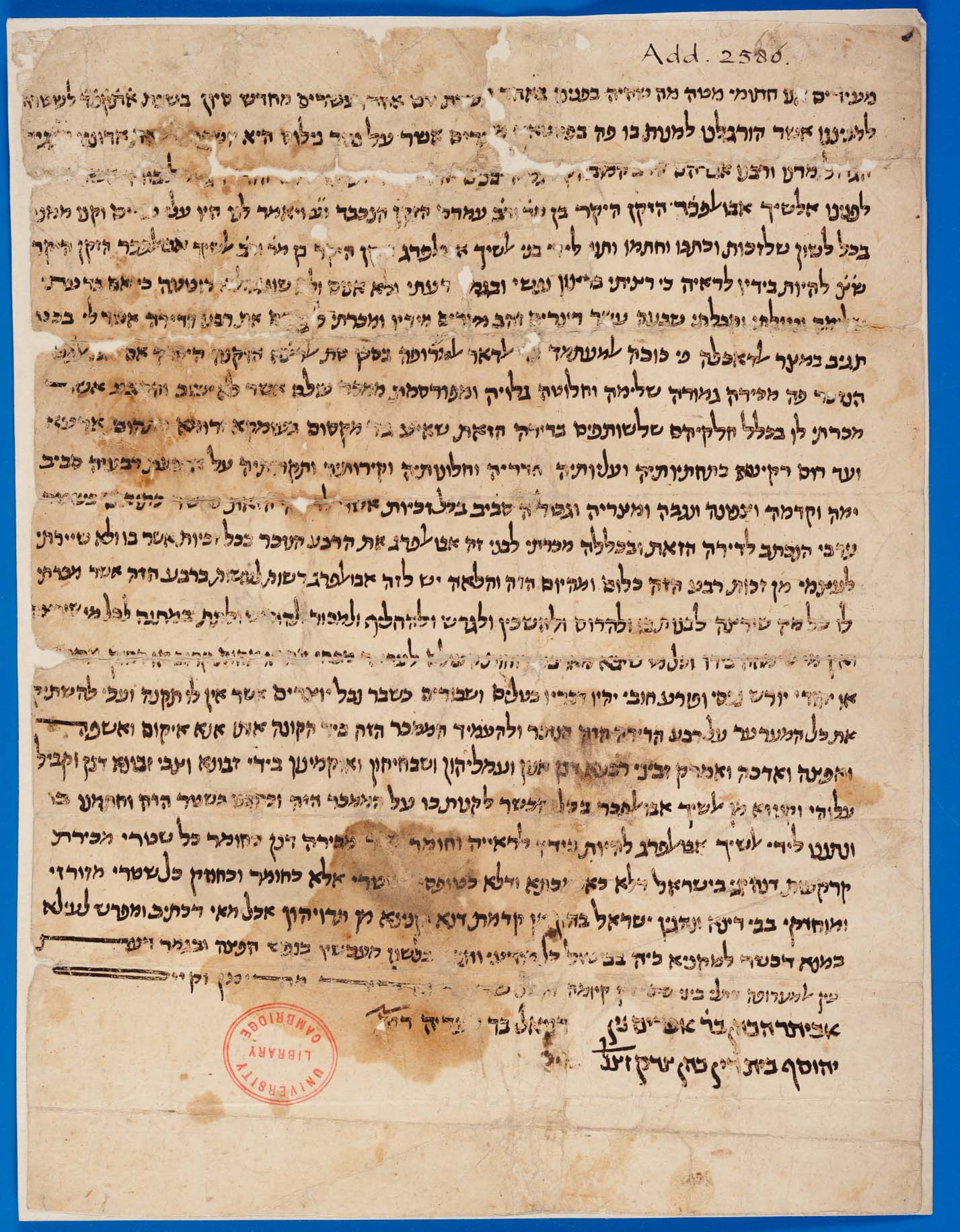
Deed of sale in which Abū l-Faḵr b. ʿAmram sells to Abū l-Faraj a quarter of the apartment belonging to him in a house belonging to Sitt al-Riḍā in the al-Muʿtamid passage of the Tujīb quarter of Fusṭāṭ for 17 dinars. Credit: Cambridge Digital Library
Deed of sale in which Abū l-Faḵr b. ʿAmram sells to Abū l-Faraj a quarter of the apartment belonging to him in a house belonging to Sitt al-Riḍā in the al-Muʿtamid passage of the Tujīb quarter of Fusṭāṭ for 17 dinars. Credit: Cambridge Digital Library
Sharing the collection with the world
“This programme of research at the GRU really has changed everything we know about pre-modern Judaism,” says Outhwaite. “And one of our responsibilities is to make it available to the world.”
Digital versions of the manuscripts are available on the Cambridge Digital Library, which offers images, translations, explanations, and a bibliographic database, and on the website of CUL, which hosts a Fragment of the Month series, the blog ‘Genizah Fragments’, and teaching resources including short movies on conserving manuscripts.
Images are also shared on the unit's Instagram page. The digital resources have become fundamentally important to scholars and Jewish populations worldwide.
The GRU also reaches audiences in other ways. Alongside extensive media coverage of the collection as a significant cultural treasure, the manuscripts have been shown in major public exhibitions – national and international – as well as seen by increasing numbers of the public who request to visit and view the collection in CUL.
Among the 200,000 fragments of medieval manuscripts in the Cambridge Genizah Collections, there are around 2,000 items related to medicine. ‘Beneficial, if God wills!’ offers a survey of the different kinds of medical texts retrieved from the Genizah.
In 2017, a six-month-long exhibition at CUL, “Discarded History: The Genizah of Medieval Cairo" was a chance to show the public a unique and unparalleled window into the daily life of men, women and children in Fustat over the course of a millennium.
The exhibition had over 42,000 visitors and was popular with synagogue and Jewish school groups, with daily curator tours and study days. Its success led to an invitation to tour the US, and for a show-and-tell of the manuscripts to religious leaders and ambassadors at the Israeli Embassy for their Eid al-Fitr events.
The exhibition is still available to explore online.
A Brush with History explores the painstaking process of conserving them– separating out individual fragments from caked-together bundles, flattening, carefully removing dirt, and consolidating ink.
Of particular importance has been the increased interest in learning about the history encapsulated in the Genizah from the UK’s Jewish community: synagogue groups and Jewish schoolchildren now make up the largest proportion of the collection’s visitors. The Hasmonean High School, Hendon, for example, has been bringing 200 year 9 students annually.
Researchers at the GRU have worked with the media to further promote the collection in popular culture, including in Simon Schama’s major BBC series ‘The Story of the Jews’ and through a long-term collaboration with Canada-based film-maker Michelle Paymar which culminated in her feature-length documentary ‘From Cairo to the Cloud’ (2018).
The GRU has also advised several authors on aspects of Genizah history for their novels such as Stefan Hertmans’ ‘De bekeerlinge’ (2014), Michael David Lukas’ ‘The Last Watchman of Old Cairo’ (2018) and Henye Meyer’s ‘Who is like your people?’ (2021). The GRU’s conservation and digitisation work featured in a National Geographic cover photo-essay ‘Bible Hunters’.
Continuing the work begun over 120 years ago by Solomon Schechter, the GRU is turning to new technologies such as multispectral imaging to analyse the collection. These are exciting developments says Outhwaite: “It’s thrilling to think there are still many more secrets to be uncovered from the Genizah of Old Cairo.”
“The Genizah is like an iceberg… 90% of it is the aspects of life and literature hidden by history that didn’t survive in any other collection, but it did in the Cairo Genizah. It's got such a depth that every portion of society is represented by something in there.”
Dr Ben Outhwaite
Published: Tuesday 31st May 2022
With thanks to:
Dr Ben Outhwaite, Director of the Taylor-Schechter Genizah Research Unit and Dr Melonie Schmierer-Lee, Research Associate.
The text in this work is licensed under aCreative Commons Attribution 4.0 International License


